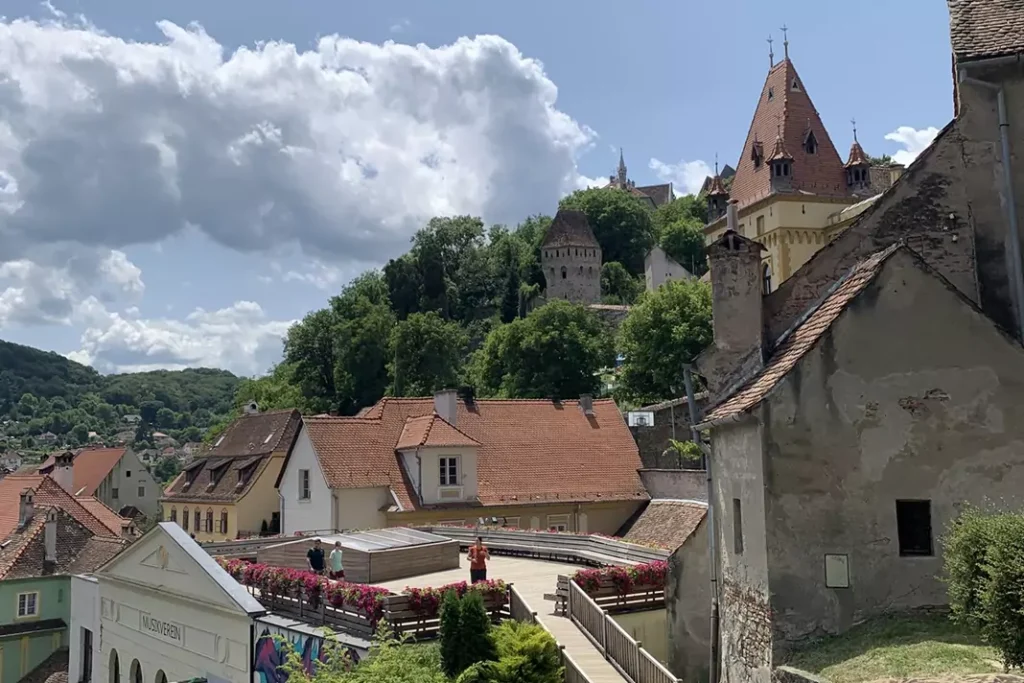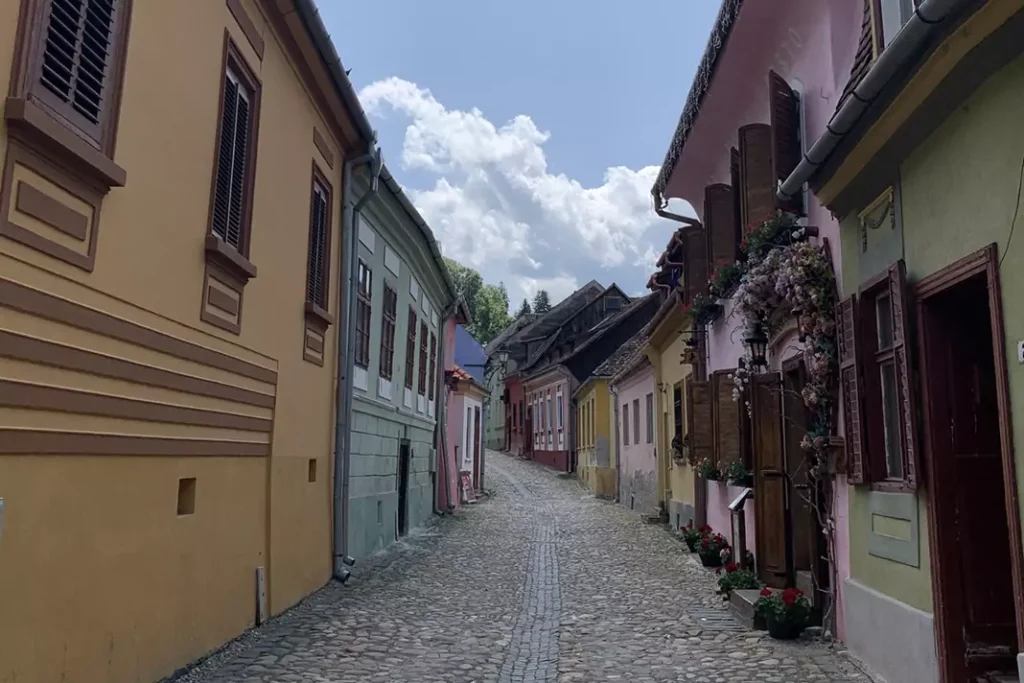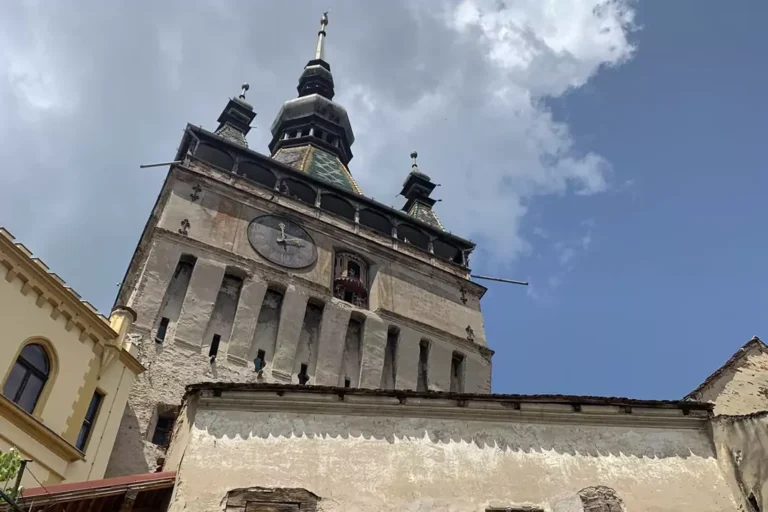In the heart of Transylvania lies a town that time forgot – a vibrant, hilltop citadel where medieval towers pierce the sky, cobbled lanes whisper legends, and the past is never out of sight.
Sighișoara, Romania’s best-preserved medieval town, offers a captivating journey into history with just enough modern charm to keep today’s travelers enchanted. Recognized as a UNESCO World Heritage Site, this small Saxon stronghold punches well above its weight in atmosphere, and authenticity.
What to see in Sighișoara: A walk through living history
The Clock Tower (Turnul cu Ceas)
Towering over the citadel at 64 meters, this 14th-century landmark is the face of Sighișoara. Its striking roof tiles, wooden balconies, and mechanical clock figures make it a must-see. Inside, the History Museum tells the story of the town’s rise from a Saxon settlement to a fortified jewel.
Vlad Dracul’s birthplace
The yellow house by the Clock Tower is where Vlad the Impaler – the infamous figure behind Bram Stoker’s Dracula – was born in 1431. Today, visitors can explore a medieval-style restaurant on the ground floor or a small exhibit upstairs.
The Church on the Hill (Biserica din Deal)
After ascending the atmospheric Scholars’ Staircase, visitors are rewarded with a peaceful Gothic church and sweeping views of the valley below. The nearby cemetery, shaded by ancient trees, is hauntingly beautiful.
The citadel walls and towers
Originally boasting 14 towers (each built by a different guild), Sighișoara’s walls still encircle the Old Town. The Tailors’ Tower, Tinsmiths’ Tower, and others can be explored on foot, offering photo ops at every turn.

What to do in Sighișoara
The heart of the citadel is made for wandering. Colorful facades, flower-filled windowsills, and artisan shops line the streets. Every corner tells a story, nd every alley holds a secret. For those eager to dive deeper, a guided walking tour will reveal the legends, architecture, and dark tales of the city. Opt for a Dracula night tour if you’re in the mood for mystery and myth.
Attend the Medieval Festival (July)
Each summer, Sighișoara transforms into a stage for one of Eastern Europe’s top medieval festivals. Expect jousting, fire-breathers, street performances, and hand-crafted goods — all set to the sound of lutes and drums.

Planning Your Visit to Sighișoara
- Best Time to Visit: Late spring to early autumn. July for festivals, September for fewer crowds.
- How to Get There: Sighișoara is accessible by train or car from Cluj-Napoca, Brașov, Târgu Mureș or Sibiu. Each has an airport with connections to major European cities.
- Where to Stay: Book a guesthouse within the citadel walls for a truly immersive experience. Options range from rustic to boutique, often housed in centuries-old buildings.











